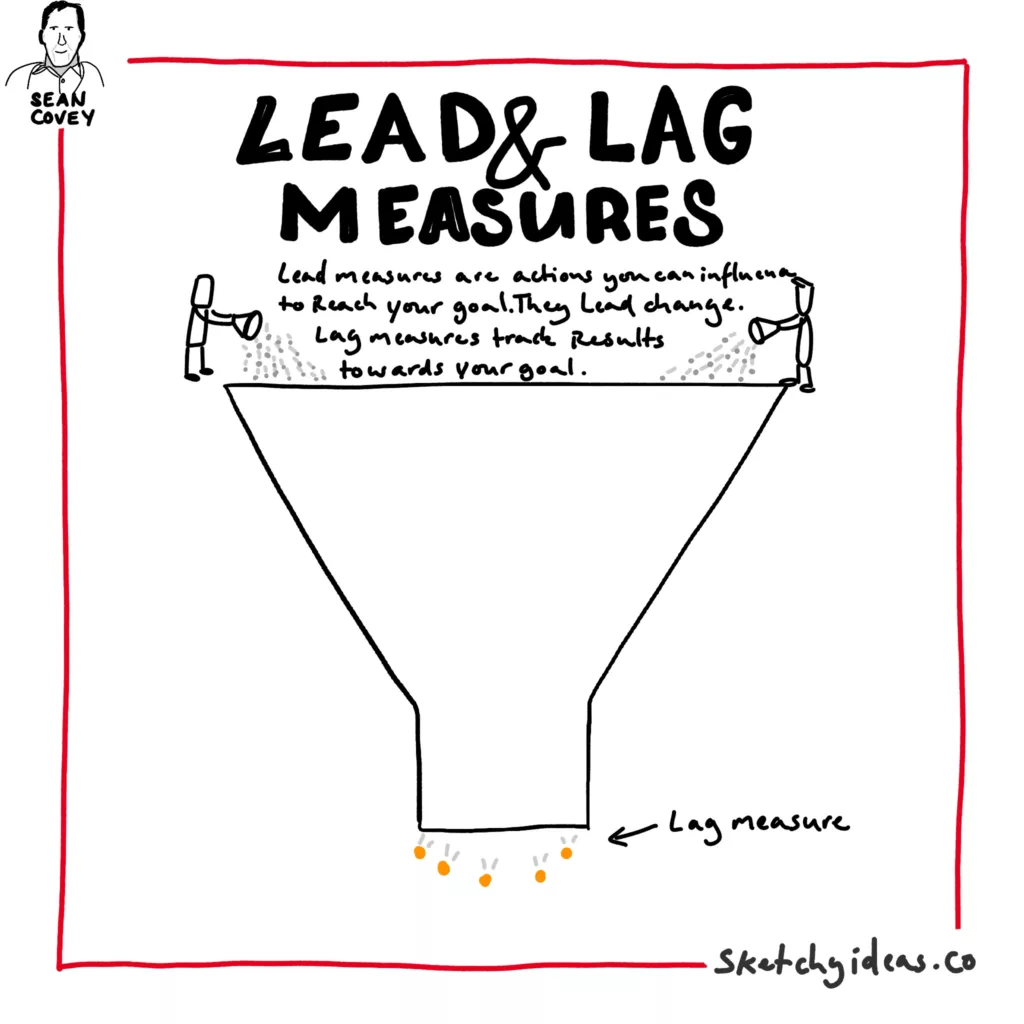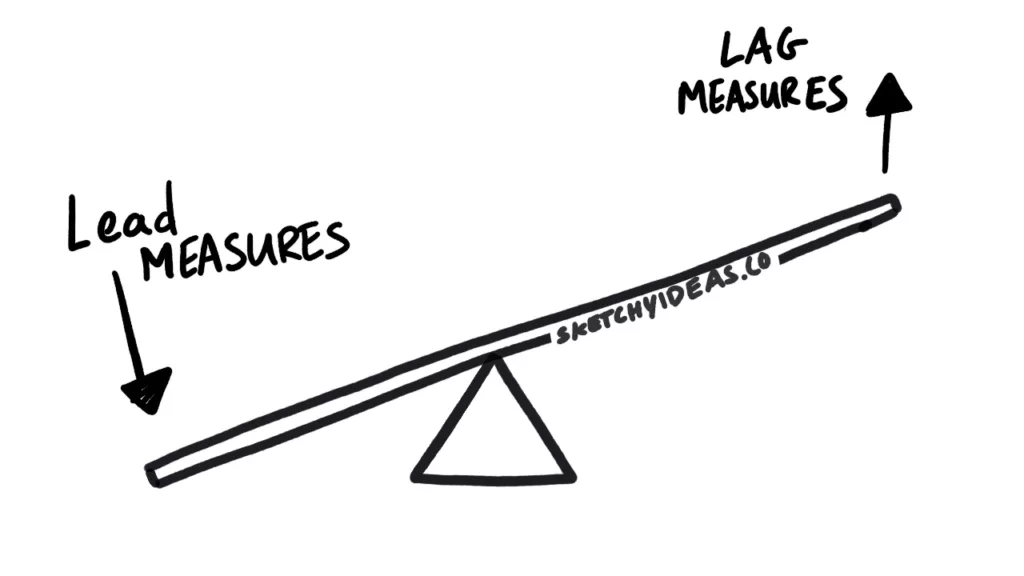We all have goals or changes we’d like to achieve.
Some big, some small. While we can achieve some simply through setting a goal, these are rare. Most require us to measure to track our progress towards our goals and take appropriate actions).
Lead and lag measures are two tools with very different purposes. Understanding and applying this mental model can help you achieve personal and professional improvements.
In this article, we’ll dive into these two different measures, where to use them, and how you can use them both in personal and professional situations.
What are Lead and Lag Measures?
Lead and lag measures are two different types of measurements.

Lag measures
Lag measures track are outcome-based and used to track results or progress.
An example is your weight. If you want to lose weight, you can track that using a scale to see if you are making progress. You can track it more or less often but it will only ever show you what you weigh at that moment.
That’s where the name comes from: they lag behind the effects of your actions.
While increasing how often you measure may help you adjust your tactics, it will never influence your actions towards that outcome. For that, you need a different type of metric.
Lead measures
A lead measure is something that influences the outcome of your goal and is easily adjusted.
Let’s go back to weight loss. An example might be the calories in your food. This is something you can increase or decrease before you eat and will lead to an effect on your weight (eventually).
Again, I hope you can see where the name comes from. These measures lead the change, lag measure lags behind and record it.
Let’s go through one more example.
Lead and lag sales measures
Imagine you are in a sales team.
You know you need to make 5 sales this month to get your bonus. An ineffective approach would be to set a target of “make a sale each week”. This would only be a lag measure with a shorter time frame.
The better approach would be to calculate how many sales calls you usually need to conduct to make a sale. Then, you just need to make about 5x that number to get your 5 sales.
Of course, this isn’t an exact science.
You could look at the number of calls you need to make to get a sale and view that as a lag measure — it’s double the rest of the sales team! So your new lead measure might be to increase the length of your sales calls, or reduce the number of times you say “erm” during your call (whatever the specific issue is).

Why Do Lead and Lag Measures Matter?
One of the biggest problems with achieving change is that we measure the wrong things.
When we only set lag measures, we don’t give people the tools to achieve the goals they are looking for. Instead, we just have a stick to beat people — or ourselves — with.
Here are three more reasons why they matter.
Drive change
Understanding and identifying lead measures gives you the tools to drive change.
Too often we default to using lag measures, but they don’t help us actually create the change we want to see. This simple shift in thinking can help unlock the ability to cause change.
Measure effectiveness
If you want to know how effective you or your lead measures are, you need lag measures.
You can’t just rely on lead measures. Even good lead measures can become a curse when we over-optimise for those measures. (Imagine making 1000 sales calls a day, but each is just dialling the number, then hanging up straight away).
To notice these issues, we need lag measures.
OKRs: A Classic System to Integrate Lead and Lag Measures
There are many systems that integrate lead and lag measures, but OKRs is one of the most well-known.
Here’s a brief summary:
- Identify your main outcomes – these should be goals that are stretching but not major stretches. It could be a certain amount of revenue, how many new feature releases you want to deliver, or perhaps how much weight you want to lose.
- Turn it into a SMART goal – not all lag measures are equal and even with lead measures, you need to set a SMART (Specific, Measurable, Achievable, Relevant, Time-bound) one. This will help you check your progress.
- Identify the key repeated actions you need to complete to achieve your goal – these will be your lead measures. You often have a couple for each outcome but don’t set more than three. These should also be “SMART” goals. E.g., eat under X calories a day.
- Establish a pattern of review – You need to check if
- You are meeting your lead measures
- Your lead measures are contributing towards your goals
- There isn’t a more important action you should be doing.
If you’d like to know more specifics about OKRs you could check out the book Measure What Matters by John Doerr.

Identify the right metrics to achieve your personal and professional goals
Now you know the difference between these two ideas, you’ve got everything you need to make real progress towards your goals. All you need to do is identify the personal and professional outcomes you want to achieve and set appropriate goals for each one.
Good luck.

Leave a Reply